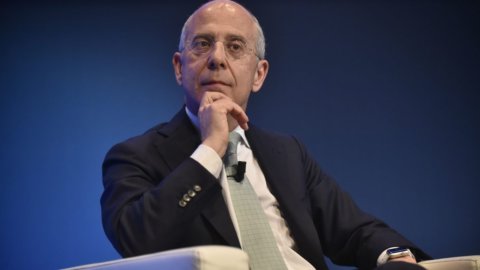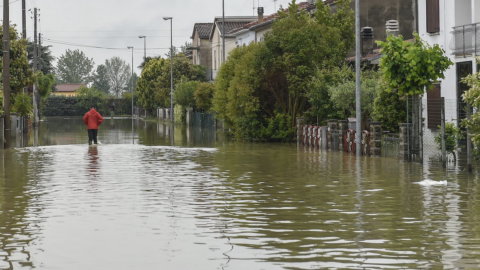Cars and electric mobility, will 2017 really be the year of the transport revolution? Francesco Starace, CEO and general manager of Enel who announced on Wednesday a 300 million investment plan for the development of the charging infrastructure in Italy, replies as follows: “To be realized, electric mobility requires the intervention of multiple players. We look at things from our point of view, that of a group that operates on all continents to sell and distribute electricity. It will certainly be a turning point for us: so far we have acted at the request of individual administrations; now instead we have developed an organic national plan that we will propose to the local institutions for the necessary authorizations".
So there is a turning point even if the numbers may seem small – 300 million – for a group that plans to invest 5,2 billion in renewables and 5,8 billion in networks for growth in the three-year period 2017-19. The real news is that the investment is calibrated on the expectation of a market of 360.000 electric cars at the end of the three-year period. A real leap forward considering that today they are 6.000 and represent just 0,01% of those in circulation. In this case, in fact, it is the perspective that counts. “The return on Ebitda – Starace was the first to admit – is marginal in the short term but could become very important within the next 5 or 6 years”. Hence the decision to take the bull by the horns and anticipate the business expected for 2018 when the car manufacturers will release the already announced new electric models. The plan for green mobility is therefore ready, it will not only concern Italy and Francesco Starace explains its details, times and objectives in this interview with FIRSTonline.
Engineer Starace, investments start in April. Who bears the cost of the operation, how will you finance it, with what geographical articulation?
“It is a question of 300 million which we will finance in part with European funds, in the other part the cost will be borne by the supplies that the customers will make from time to time. So it won't affect your electricity bills. The approximately 12.000 columns that we will install in two-three years will have both fast and normal charging, and we would like them all to be enabled for Vehicle to Grid (V2G) technology, i.e. capable of withdrawing but also returning, selling it, energy to network according to a patent that we are the only ones to have developed and that we are already successfully testing in the UK and Denmark. This service is not currently regulated in Italy, but we would like to be able to develop it in our country as well".
Highways or cities: where will you place your charging points?
“All 8 Italian municipalities will have charging stations, none excluded; all motorways will be equipped at the rate of 1 system every "X" kilometers and so will the state roads and cities where we will also sign agreements with fuel distributors, on the model of the one made with API. So much for the public network, designed to make travel from North to South possible without a hitch. To this will then be added private charging points and those in hotels or shopping centres, supermarkets and so on".
Does infrastructure or services come first? In telecommunications, the absence of an ultra-broadband network – which you too are now helping to create – has held back the launch of the most innovative services in Italy. In electric mobility?
“There is no doubt that infrastructure comes first in mobility: nobody buys an electric car if they are not sure they can refuel. The cost of the infrastructure, moreover, is not stratospheric so it is not a problem to get started. The current numbers on electric vehicles on the road are too small to be significant but we see that all car manufacturers, none excluded, have announced models with 500 km of autonomy for delivery in 2018. For this reason we want to anticipate and implement the network in time to implement the new influx of cars on the market”.
Currently 6.000 electric cars are circulating in Italy, 0,01% of the vehicles, while in Norway they are 25% and in Holland 10%. We are already late?
“In those countries, the incentives granted by governments played a significant role, but I wouldn't say that Italy is in a competitive disadvantage. On the contrary, from a technological point of view we are among the first in Europe and can apply for leadership in the sector. The latest report, presented last Wednesday with Symbola, shows that an incredible number of small, medium and large companies are involved in electric mobility in Italy. There is the beginning of a potential supply chain that can give excellent results”.
Is interoperability between different types of charging points and operators a dream or is it possible? The fact of paying for the electric recharge with a single card wherever one faces it would be a great goal. Ing. Starace, don't you think?
“And yet this is what is happening today in the oil sector. For example, no one uses the Agip card even from the IP distributor. In our case, we have an advantage: starting from scratch, interoperability is not difficult to achieve; from a technological point of view it is already possible and we will end up paying for everything by mobile phone. Rather, it is essential that there is a common European standard on plugs so that we don't drive around with cars full of adapters. A coordination table is already open on this with the various distributors in the EU”.
Vehicle to grid, he said, is working abroad. Selling electricity to the grid also reduces the cost of the car. An alternative to the incentive?
“There is no doubt that it is an economic facilitator, as are access to urban centres, free parking, the possibility of circulating on traffic block days or other initiatives as well. Furthermore, the one-off incentive works if you buy a car, but in the electricity sector the leasing method is more suited to following the very rapid technological advancement of the models. We have done tests with our employees in Spain and Italy with great success”.
Italy – with Rome, Turin and Milan – is in the sights of the EU for too much smog so much so that we risk, with London, Paris and Berlin, an infringement procedure if it is not remedied in the next two months. Our cities are gas chambers but the electric car solves the problem or only transfers it to the centers of electricity production? And is it enough to intervene on private individuals without affecting the public transport hub?
“Decarbonization takes place at the level of energy consumption. The end to end efficiency of a combustion engine is 17-19%, that of an electric motor is around 36%. Therefore, with the same electricity production mix – and our model is based on 40% of renewable sources in Italy today – cutting traditional transport halves CO2. Naturally, the higher the share of renewables in electricity generation, the more profitable the replacement of internal combustion engines with electric motors becomes. And, as far as Enel is concerned, we consider it realistic to achieve a 100% renewable global horizon over the next 30 years. So far we have talked about private transport; but the convenience is even greater in the public one: electric buses are already available and are competitive. Their use depends on local administrations and their degree of knowledge on the advantages in terms of atmospheric improvement but also of noise, well-being for the community. To understand each other: in Florence there are more columns than in the Italian average, Rome is not in bad shape, Milan is doing well, but there is no national policy: everything is left to local sensitivities. And they aren't always there."
Italy will therefore be the forerunner on electric mobility in Enel's programmes. The next stop?
“Enel operates all over the world and we can replicate the experience made here in Italy elsewhere. South America, and I am thinking of cities like Bogota, Santiago, Rio where we are present, is very ahead in terms of public transport. In Spain, on the other hand, the issue of private transport is more felt. Over the next two months we will launch a new global business line that will deal with all offers to customers other than electricity and gas: energy efficiency, lighting, Internet of Things, home automation and electric mobility, in fact. Its task will be precisely that of realizing the innovation and transferring the experience gained from time to time to the various countries in which we operate”.
Francesco Starace, Enel: "Electric cars, it's a turning point"
INTERVIEW OF THE WEEKEND – The CEO and general manager of the group explains the change of pace in electric mobility: 12.000 charging stations by 2019, a national plan calibrated on 360.000 vehicles in circulation against the current 6. “All manufacturers have announced models with a range of 500 km in 2018, they will not find us unprepared”. The return on the Ebitda? "It may become important in 5 or 6 years." Developments in Spain and South America.





